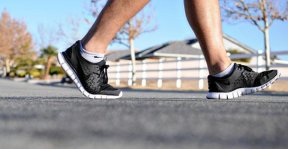
By: Dr. Kwame Foucher, senior medical director, UnitedHealthcare of Illinois
Edited by Lawndale Bilingual Newspaper
The American Heart Association established National Walking Day – the first Wednesday in April – in 2007, and since then has encouraged individuals, schools, workplaces and communities to get out and walk for at least 30 minutes and put themselves on the road to better health. Most people know walking is good for their health. The Centers for Disease Control and Prevention (CDC) recommends that adults get at least 150 minutes of moderate aerobic activity or 75 minutes of vigorous physical activity – or an equivalent combination each week. And, as the CDC reminds us, walking doesn’t require special skills, a gym membership or expensive gear. Research has shown that walking can improve people’s health by helping them maintain a healthy weight, prevent and manage conditions such as heart disease and diabetes, strengthen bones, ward off depression, and improve balance and coordination. And new technologies such as activity trackers – coupled with incentive-based wellness programs – may make walking even more fun, social and rewarding.

These innovative approaches are urgent because, according to the World Health Organization, two-thirds of Americans are overweight or obese. A McKinsey report suggests the nation loses $225 billion in lost productivity each year due to personal and family health problems. In Illinois, 29.3 percent of the adult population is considered obese with a body mass index of 30 or more, according to United Health Foundation’s America’s Health Rankings. What better reason and more social way to help people get moving and on track for better health than to literally take that first step? An estimated 70 percent of employers already offer wellness programs, and 8 percent more plan to do so during the next year, according to the Society for Human Resource Management. Employers nationwide are expected to incorporate more than 13 million activity trackers into their wellness programs by 2018, according to technology consultancy Endeavors Partners. That’s important, considering a study in Science & Medicine showed people tend to overestimate how much exercise they get each week by more than 50 minutes, and they underestimate sedentary time by more than two hours. People who use wearable devices may be better able to monitor and hold themselves accountable for their physical activity. In Illinois, employers and employees can enroll in UnitedHealthcare Motion, a wellness program in collaboration with Qualcomm Life that links financial incentives to the use of activity trackers. By meeting walking benchmarks related to frequency (300 steps in five minutes; six times a day), intensity (3,000 steps in 30 minutes), and tenacity (10,000+ total daily steps), program participants can earn financial incentives of up to $1,500 per year.
What does 10,000 steps a day look like? To help celebrate this year’s National Walking Day, UnitedHealthcare has launched an online map that takes users on a walking tour of the United States, 10,000 steps at a time. This interactive rollover map highlights the health benefits of walking a minimum of five miles each day (approximately 10,000 steps), and helps people visualize what that distance looks like in cities nationwide, including Chicago. So, this National Walking Day, go take a walk!










